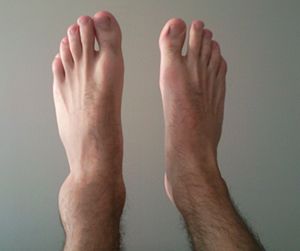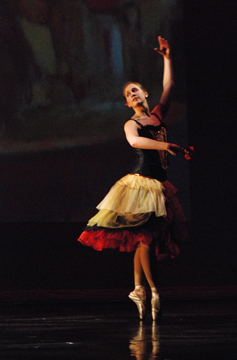 |
| Salsa dancing (Photo credit: Wikipedia) |
Dancing in high heels is stately and elegant, but the shoes aren’t the most supportive and accidents do happen. Most shoes considered “high heels” are about 3 inches high and up. Many of them have narrow foot bed and spike type heels, which mean there is very little contact with the floor, and most of that is balancing on the ball of the foot. Too much time raised on your toes will place a lot of stress on that area and can result in ball of foot pain as well as calf pain.
The light, airy strappy sandals are not a good bet for durability. Often times the shoe construction is such that it creates pressure points on the foot, or seams and stitching are not finished in a manner that prevents abrading your foot. If you spend much time in this type of shoe, the fact that they allow your leg a stylish and elegant profile should only be secondary to comfort. For long hours on the dance floor, a 2 inch enclosed pump would offer a more natural foot position and better protection for your toes and more contact with the floor.
Strappy sandal type dance shoes offer no protection against turning an ankle. Sprains are painful and can cause missed time from work and leisure activities. If you do choose these for the dance floor, make sure they are dance shoes. Dance shoes have a metal shank that runs from inside the heel to the mid-sole. This prevents the heel from twisting if you do make a misstep.
Many people laugh at dancers and claim dancing cannot possibly be rough enough to equate to athletics. However, ask any dancer as they suffer the same injuries any other athlete does. Injuries include the following:
- Sprained ankles
- Ruptured tendons
- Repetitive stress injuries
- Pulled muscles
References:
http://www.danceuniverse.co.kr/know/gentlesport.htm
http://answers.yahoo.com/question/index?qid=20070426002145AAfwf3o
































